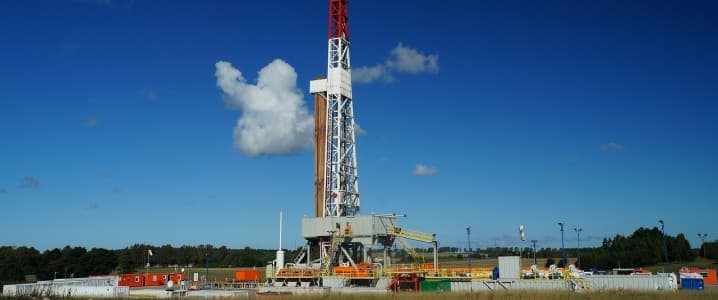The world needs to invest US$25 trillion in new oil-producing capacity over the next 25 years to meet growing demand, Saudi Aramco’s chief executive Amin Nasser said at the World Economic Forum in Davos on Tuesday.
According to the CEO of Saudi Arabia’s giant state-held oil company, global demand for oil and gas will still grow in the coming decades, so if capital investment drops, it could create “spikes” in prices and hurt the global economy, CNBC reports. Demand is still healthy and oil “will be with us for decades”, CNBC quoted Nasser as telling a Wall Street Journal panel at the Davos forum.
The global oil and gas industry needs to expand and requires more investment, Nasser said.
After two years of significantly lowered capital investment by the industry, a recent report by Wood Mackenzie suggests that “the global investment cycle will show the first signs of growth in 2017, bringing the crushing two-year investment slump to a close”.
WoodMac sees E&P global spend rise with about 3 percent in 2017 to around $450 billion. According to WoodMac’s Malcolm Dickson, ‘’companies will get more bang for their buck,” as internal rates of return jump from 9 to 16 percent, comparing 2014 to 2017.
The chart below from WoodMac shows that the amount of final investment decisions (FID’s) are expected to double in 2017, compared to 2016.
Related: 5 Energy Stocks To Watch In 2017
(Click to enlarge)
The Impact of Renewables
At the WEF, Saudi Aramco’s chief executive noted that renewables would gain some market share in the long run, but renewable energy would not dominate.
“It will take decades for them [renewables] to replace petroleum resources. So what we are doing in Saudi Aramco we are building our capacity in the oil,” according to the manager.
Saudi Arabia currently has oil capacity of 12.5 million bpd, which it continues to build upon, Nasser said.
ADVERTISEMENT
The Kingdom also plans to double its gas capacity over the next decade, which would enable it to ship more crude oil onto the market, Saudi Aramco’s manager added.
Just yesterday, Saudi Arabia’s Energy Minister Khalid Al-Falih said that his country would begin soliciting bids for a “massive” renewable energy push, with spending reaching as high as US$50 billion. The move is intended to source at least 10 GW of electricity from solar and wind by 2023, a rapid escalation of renewable energy installations for the Kingdom in order to conserve oil for exports.
By Tsvetana Paraskova for Oilprice.com
More Top Reads From Oilprice.com:
- The Rebound Is Here: Megaprojects Back On The Table
- GreaseBook: Reporting Oil Production Just Became Much Easier
- Saudi Arabia To Spend $50 Billion On Massive Solar Push




















The problem is that the cost of oil necessary to raise that much money is too high for the economy to fund. Just because there is oil in the ground, doesn't mean we can afford to get it out. Within about 15 years, the oil price will get so high that shortages will begin to develop because the money won't be there to get enough oil out of the ground. Those shortages will force the entire economy to begin to shrink. That is called a recession. Since the cheap oil will be gone forever, and since there is no cheaper substitute for oil in transportation, you can expect a major economic crisis, unlike anything ever seen, to follow shortly thereafter.
The record level of debt will probably bring down the banking system, which is not designed to operate in an economy being forced to continually shrink from a lack of the ability to get goods to markets. In 1975 I looked out of the window on the 45th floor of the Plaza Tower in New Orleans and saw the ships on the Mississippi, the trucks on the bridges, and the jets landing at Louis Armstrong International Airport. I was shocked when, standing alone in the unfinished room with the concrete floor, I realized what would happen when the oil moving everything ran out. I comforted myself with the thought that I would be dead before it happened, because it wouldn't be a pleasant experience trying to survive without oil. Luckily for me, horizontal drilling and fracking came along and pushed the peak back a decade or so.
Only nuclear fusion could possibly avoid the coming collapse. That is a long shot.
I hope I'm wrong. It won't be the first time. The frustrating thing is how few people recognize the coming crisis. They don't seem to understand the definition of the word finite, nor the critical role oil plays in transporting nearly everything we need. But within about 15 years, they will.
$25T buys 100 Tesla Gigafactories, 25 years of battery output from those factories, with money left over for 8-10TW of solar and wind generation and grid upgrades
That supplies enough batteries to replace 2.5B fossil-fuelled vehicles with 300-mile+ EVs, or 1B vehicles and 150TWh of grid storage.
Now if I were an investment banker, I might mention that to Aramco and ask if they'd like to adjust their strategy...
Lesson #1, the Saudis absolutely cannot be trusted.
Lesson #2, Saudi crudes are a generic commodity under global threat from new technologies like fracking. While Amwerican crude fracking has punched conventional global crude production in the nose, it has just begun as a global business.
Lesson #3, Saudi Arabia is ruled by authoritarian anti-democratic anti-western religious barbaric fanatics whose kingdom has started to decline through internal social strife. It's a lousy place for an investor.
Who's gonna buy an ARAMCO IPO. Just China and India whose thirst for energy in any form is insatiable.